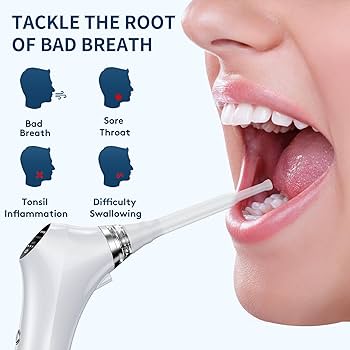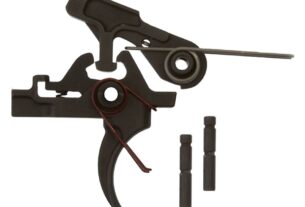Tonsil stones, also known as tonsilloliths, are calcified deposits that form on the crevices of your tonsils. They can be quite bothersome, causing bad breath, sore throats, and difficulty swallowing. If you’re suffering from tonsil stones, you’ll want to find the best tool for removing them. In this article, we’ll take a look at some of the best tools on the market and help you decide which one is right for you.
[h2]What Are Tonsil Stones?[/h2]
Tonsil stones are small, hard calcifications that form in the crevices of your tonsils. They are typically white or yellowish in color and can vary in size from tiny specks to larger formations that resemble gravel. The stones are formed from bacteria, food particles, dead cells, and other debris that get trapped in the tonsil crypts. Over time, these materials calcify and harden into tonsil stones.
[h2]Symptoms of Tonsil Stones[/h2]
The symptoms of tonsil stones can vary depending on their size and location. Some common symptoms include:
– Bad breath
– Sore throat
– Difficulty swallowing
– Ear pain
– Swollen tonsils
– White or yellowish spots on the tonsils
If you’re experiencing any of these symptoms, it’s important to see a doctor or dentist to determine whether you have tonsil stones.
[h2]Best Tools for Removing Tonsil Stones[/h2]
1. Cotton Swabs
One of the simplest and most affordable tools for removing tonsil stones is a cotton swab. You can use a regular cotton swab or a dental cotton swab, which has a longer handle and a more pointed tip. To use a cotton swab, simply moisten the tip with water or mouthwash and gently press it against the tonsil stone. Then, slowly rotate the swab to dislodge the stone from its crevice.
Pros: Cotton swabs are cheap and easy to find at any drugstore. They can be used for gentle removal of small tonsil stones.
Cons: Cotton swabs may not be effective for larger or more stubborn tonsil stones. They can also cause irritation or injury to the tonsils if used too forcefully.
2. Water Flosser
A water flosser is a device that uses a stream of water to clean between your teeth and gums. Some models come with specialized attachments for cleaning the tonsils as well. To use a water flosser for tonsil stone removal, fill the tank with warm water and direct the stream at your tonsils. The pressure of the water should dislodge any trapped debris or stones.
Pros: Water flossers are effective for removing larger or more stubborn tonsil stones. They can also be used for general oral hygiene.
Cons: Water flossers can be expensive and may require frequent refilling of the tank. They may also cause discomfort or bleeding if used too forcefully.
3. Oral Irrigator
An oral irrigator is similar to a water flosser but uses pulsating streams of water instead of a continuous stream. Some models come with specialized tips for cleaning the tonsils as well. To use an oral irrigator, fill the reservoir with warm water and direct the stream at your tonsils. The pulsations should help dislodge any trapped debris or stones.
Pros: Oral irrigators are effective for removing larger or more stubborn tonsil stones. They can also be used for general oral hygiene.
Cons: Oral irrigators can be expensive and may require frequent refilling of the reservoir. They may also cause discomfort or bleeding if used too forcefully.
4. Tonsil Stone Removal Tool
A tonsil stone removal tool is a specialized instrument designed for removing tonsil stones. The tool typically has a long, thin handle with a small scoop or loop at the end. To use the tool, insert the scoop or loop into the tonsil crevice and gently scrape the tonsil surface to dislodge any trapped debris or stones.
Pros: Tonsil stone removal tools are effective for removing larger or more stubborn tonsil stones. They are also specifically designed for tonsil stone removal.
Cons: Tonsil stone removal tools can be expensive and may require some practice to use effectively. They may also cause discomfort or injury to the tonsils if used too forcefully.
[h2]Conclusion[/h2]
In conclusion, there are several tools available for removing tonsil stones. The best tool for you will depend on your individual needs and preferences. Cotton swabs are cheap and easy to use, but may not be effective for larger or more stubborn stones. Water flossers and oral irrigators are more expensive but can be effective for general oral hygiene as well as tonsil stone removal. Tonsil stone removal tools are specifically designed for this purpose but can be expensive and may require some practice to use effectively.
Regardless of which tool you choose, it’s important to practice good oral hygiene to prevent tonsil stones from forming in the first place. Brush your teeth twice a day, floss regularly, and use an antiseptic mouthwash to kill bacteria. If you’re experiencing persistent symptoms of tonsil stones, see a doctor or dentist for further evaluation.
References:
– Mayo Clinic. (2021). Tonsil Stones (Tonsilloliths). Retrieved from https://www.mayoclinic.org/diseases-conditions/tonsil-stones/symptoms-causes/syc-20378423
– American Dental Association. (2021). Water Flossers. Retrieved from https://www.mouthhealthy.org/en/az-topics/w/water-flossers
– Healthline. (2021). Oral Irrigator. Retrieved from https://www.healthline.com/health/oral-irrigator




